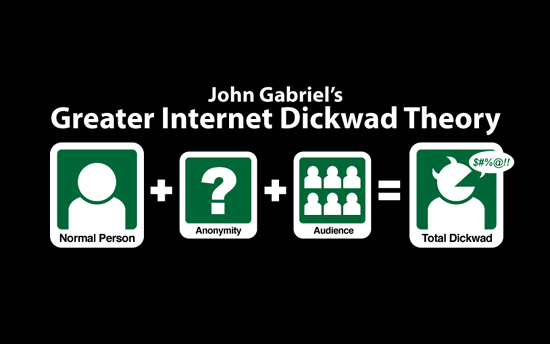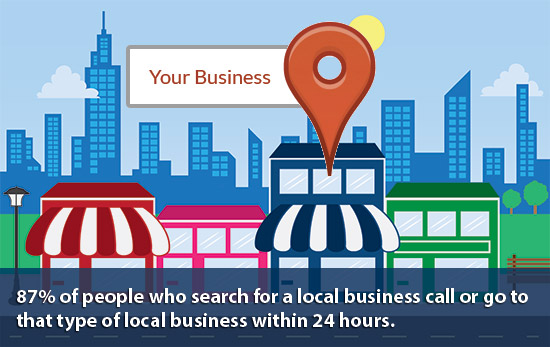Marketing has always consisted of presenting a narrative of your product, service, or even ideas and crafting them in a manner more pleasing to the audience. With the increase in data sharing and interactions online, this has only grown. The problem with this growth is that it comes with an increasing rate of growth for Content Countermeasures that are intended to stifle, erase, or completely distort the truth about specific content online. Content Countermeasures are nothing more than the attempt to deceive the public with exaggerated, inflated and, in some cases, invented information.

In some cases, this serves a very legitimate purpose, like incentivizing positive reviews and ratings from clients to overcome someone who griped about not getting his water and hot bread fast enough when entering a restaurant. There are certainly legitimate cases like this for businesses to present a positive image of themselves to the public. There is a duality of this topic as there are those who purposefully mislead the public with positive or negative spam of business content, causing a countermeasure to any possible chance of receiving accurate information. While this might seem like a trifle act, it damages the ability to have a reasonable expectation of receiving correct and verifiable data in search results.
"Reputation Management Scams"

When it comes to the dirtier uses of Content Countermeasures, the "
reputation managers" of the world are almost always going to be one of the top offenders. The ads heard on talk radio and pushed for local companies are usually nothing short of bragging on how they can spam the public with disinformation about your company or yourself. Sure, it's sold as "restoring your good name", but if you are going to go through extreme steps(and reputation management often requires extreme steps) to garner enough faked or duplicated content to push down the negative reviews and ratings, then the entire concept of public relation is in shambles. Again, this isn't being critical of those who have a solid and honest goal of ensuring honest content about their business (because we will talk below of the content assassins below). Let's be clear, if you have to market your company or yourself with false or spammed information, then you or your product simply aren't worth what you are trying to present them as.
Scam Spam
The same holds true for people who want to push down legitimate information to hide their concerning content from the public. Content writers are notorious for this one. We get a different one filling our spam folders every week with messages bragging about how they can spam the highest ranking blogs on the internet ... for a price of course. This is a two-pronged version of Content Countermeasure SEO. First, they are spamming mass content about themselves on the front end of the conversation, then, they have to do something to remove data from all of the people who are complaining about the unsolicited content. There will be the guys who have dozens, sometimes hundreds of wordpress.com, blogger, webly, Tumbler...etc, sites with several variations of their own name and all with content claiming to be the most relevant. We've found the same thing done lately with people who have warrants and want to confuse police (from identifiable IP addresses though, so not sure how well that works). Additionally, they will play the game of buying any and all variations of ones name in domain format, and again, spamming the internet with redundant and often obscure data to attempt to divide relevancy on the person's identity. We ran into one of these guys recently who had over 200 variations of his own name out there, all to push down the 40-50 ripoff reports filed about his poor business practices. The spam data traces act as a SEO Countermeasure to prevent people from finding about his actual business practices, and instead focus on a false narrative that is completely opposite to reality.

No, I am not coming down on narratives themselves. As I said in the intro to this post, narratives are shaped by the marketer, but as soon as they are completely falsified narratives, then nothing is left but a dishonest scam being perpetrated on the reader. The petty marketers who believe that there is a magical line of lies they can hover on and still have their integrity intact are some of the most genuine and shining examples of cognitive dissonance available.
SEO Assassins
These are the lowest bottom-feeders of he internet. They include "Yelpers", "Competing Reviewers", and all the others willing to destroy. Content Assassins, or SEO Assassins are often written off as competitors or disgruntled employees, but we've found more instances lately of little to no association being the culprit. The internet gives strength to those who wish to do damage to others with impunity.

A restaurant client of ours apparently slighted a patron by serving his therapist. The individual saw this as a slight against him, and went on to commit a fake review and spam campaign to destroy the restaurant's reputation. Using a photoshopped comment image, the spammer made it appear that the restaurant (run by a gay man) had made anti-gay statements to him on Facebook. This one fake image, posted in several LGBT social media groups, caused over 500 negative reviews in one night. By the time the restaurant came to us, we had over 900 review accounts to send individual requests and explanations to.
 Well, so what do they want? Too often business owners and marketers will be so concerned with our desires for immediate gratification, that we forget the most important part of the user experience is to first know what the user wants to begin with. The User’s wishes have to be fulfilled, and this can only be done by understanding what their actual wants are.
Well, so what do they want? Too often business owners and marketers will be so concerned with our desires for immediate gratification, that we forget the most important part of the user experience is to first know what the user wants to begin with. The User’s wishes have to be fulfilled, and this can only be done by understanding what their actual wants are.
 In the end, the most likely reason a user will be at your site is the content they are searching for. Ensuring that you have the right content for your target market is always the starting point of a strong User Experience Web Design and Development strategy.
A futuristic idea is to eventually engage with more than just dynamic content. Some sites and developers are trying to design and develop with predictively created content in mind. No, this isn’t a reference to retrieving content predictively for an individual, but to aggregated and create content customized for that individual, based on their wishes. Many apps and sites are trying this now, but are still locked in predisposed rules, there is some traction to developing a truly customized experience with completely original and created content based solely on the user’s desires. The option of AI responsiveness is also worth mentioning since it would be the logical step forward in producing a truly responsive development. How long something like that will take to get here is only limited to our motivation to bring it.
In the end, the most likely reason a user will be at your site is the content they are searching for. Ensuring that you have the right content for your target market is always the starting point of a strong User Experience Web Design and Development strategy.
A futuristic idea is to eventually engage with more than just dynamic content. Some sites and developers are trying to design and develop with predictively created content in mind. No, this isn’t a reference to retrieving content predictively for an individual, but to aggregated and create content customized for that individual, based on their wishes. Many apps and sites are trying this now, but are still locked in predisposed rules, there is some traction to developing a truly customized experience with completely original and created content based solely on the user’s desires. The option of AI responsiveness is also worth mentioning since it would be the logical step forward in producing a truly responsive development. How long something like that will take to get here is only limited to our motivation to bring it.
 Using this definition, let’s consider how best to ensure a quality user experience from start to finish. The user experience has to start with empathy for what the user would wish to encounter in your digital business profile. More and more digital customers want the same effort for an experience placed into digital media as they would expect for arriving at your business in person. For too many years, the marketing method of welcoming users to a site was to simply inundate them with data and articulate information. While both are important, the same can be garnered using a billboard. Instead, we need to consider how to welcome them to our sites, even if we are ranking the top for a keyword. (what is the point of ranking the highest if you also have the highest bounce rate?).
So, we start with empathy:
Why did this customer search this term?
Choosing keywords needs to be user oriented. For too many years, marketing director and SEO gurus have chosen keywords solely based on sales and conversions with little regard to additional reasons a customer may come to their site, as a result, the market has been marginalized when it comes to keyword targeting.
Users are not completely satisfied with Search Engine Results now due to the mixed bag of outcomes in the results. Much of this is the fault of our SEO Strategies that have pushed businesses to the tops of search results by providing the best answer in text, even when they may not be the “best answer” in reality. This has caused the modern consumer to become less and less impressed by search engine placement. Don’t get me wrong, local services and immediate need sales are still in vital need of top placement in the search engines, but the non-immediate purchases are becoming more and more thought based.
Local searches for plumbers will certainly still benefit from the top listing in organic and map, but what about for their non-emergency sales? The searching customers not requiring an impulse purchase are becoming more reliant on user investigation and “purchase assurance” than just the need to address the issue in the easiest way possible.
As a society, we are becoming more diligent about the items we individually care most for, and as a result, our marketing methods have to shift to accommodate for digital narcissism. We are obsessed with the desire to garner the attention of our fellows and become recognized as individual “truth givers” and “knowledgeable people” to our fellows.
People inherently work for the acceptance of others, and with the advent of the digital age, people have begun basing self-worth and assessment on how others view their ability to be knowledgeable resources of data and information. As a result, you should start by considering what the individual will be looking for to satisfy that internal need and proceed with a marketing strategy that incorporates this knowledge.
Google coined the term the “0” Moment marketing Truth, I would go to say that this is the precursor to it. Empathizing and breaking down the average user to his core understanding has to come first. Doing so allows us to choose keywords based off of what the user actually wants in the way of an experience, not just what we wish to sell them.
There are many deeper aspects to this line of thought. Next, we will discuss why finding the customer/visitors interests before they do is a vital use of this empathy and the next step in your User Experience Based marketing strategy.
Using this definition, let’s consider how best to ensure a quality user experience from start to finish. The user experience has to start with empathy for what the user would wish to encounter in your digital business profile. More and more digital customers want the same effort for an experience placed into digital media as they would expect for arriving at your business in person. For too many years, the marketing method of welcoming users to a site was to simply inundate them with data and articulate information. While both are important, the same can be garnered using a billboard. Instead, we need to consider how to welcome them to our sites, even if we are ranking the top for a keyword. (what is the point of ranking the highest if you also have the highest bounce rate?).
So, we start with empathy:
Why did this customer search this term?
Choosing keywords needs to be user oriented. For too many years, marketing director and SEO gurus have chosen keywords solely based on sales and conversions with little regard to additional reasons a customer may come to their site, as a result, the market has been marginalized when it comes to keyword targeting.
Users are not completely satisfied with Search Engine Results now due to the mixed bag of outcomes in the results. Much of this is the fault of our SEO Strategies that have pushed businesses to the tops of search results by providing the best answer in text, even when they may not be the “best answer” in reality. This has caused the modern consumer to become less and less impressed by search engine placement. Don’t get me wrong, local services and immediate need sales are still in vital need of top placement in the search engines, but the non-immediate purchases are becoming more and more thought based.
Local searches for plumbers will certainly still benefit from the top listing in organic and map, but what about for their non-emergency sales? The searching customers not requiring an impulse purchase are becoming more reliant on user investigation and “purchase assurance” than just the need to address the issue in the easiest way possible.
As a society, we are becoming more diligent about the items we individually care most for, and as a result, our marketing methods have to shift to accommodate for digital narcissism. We are obsessed with the desire to garner the attention of our fellows and become recognized as individual “truth givers” and “knowledgeable people” to our fellows.
People inherently work for the acceptance of others, and with the advent of the digital age, people have begun basing self-worth and assessment on how others view their ability to be knowledgeable resources of data and information. As a result, you should start by considering what the individual will be looking for to satisfy that internal need and proceed with a marketing strategy that incorporates this knowledge.
Google coined the term the “0” Moment marketing Truth, I would go to say that this is the precursor to it. Empathizing and breaking down the average user to his core understanding has to come first. Doing so allows us to choose keywords based off of what the user actually wants in the way of an experience, not just what we wish to sell them.
There are many deeper aspects to this line of thought. Next, we will discuss why finding the customer/visitors interests before they do is a vital use of this empathy and the next step in your User Experience Based marketing strategy. In some cases, this serves a very legitimate purpose, like incentivizing positive reviews and ratings from clients to overcome someone who griped about not getting his water and hot bread fast enough when entering a restaurant. There are certainly legitimate cases like this for businesses to present a positive image of themselves to the public. There is a duality of this topic as there are those who purposefully mislead the public with positive or negative spam of business content, causing a countermeasure to any possible chance of receiving accurate information. While this might seem like a trifle act, it damages the ability to have a reasonable expectation of receiving correct and verifiable data in search results.
"Reputation Management Scams"
In some cases, this serves a very legitimate purpose, like incentivizing positive reviews and ratings from clients to overcome someone who griped about not getting his water and hot bread fast enough when entering a restaurant. There are certainly legitimate cases like this for businesses to present a positive image of themselves to the public. There is a duality of this topic as there are those who purposefully mislead the public with positive or negative spam of business content, causing a countermeasure to any possible chance of receiving accurate information. While this might seem like a trifle act, it damages the ability to have a reasonable expectation of receiving correct and verifiable data in search results.
"Reputation Management Scams"
 When it comes to the dirtier uses of Content Countermeasures, the "
When it comes to the dirtier uses of Content Countermeasures, the " No, I am not coming down on narratives themselves. As I said in the intro to this post, narratives are shaped by the marketer, but as soon as they are completely falsified narratives, then nothing is left but a dishonest scam being perpetrated on the reader. The petty marketers who believe that there is a magical line of lies they can hover on and still have their integrity intact are some of the most genuine and shining examples of cognitive dissonance available.
SEO Assassins
These are the lowest bottom-feeders of he internet. They include "Yelpers", "Competing Reviewers", and all the others willing to destroy. Content Assassins, or SEO Assassins are often written off as competitors or disgruntled employees, but we've found more instances lately of little to no association being the culprit. The internet gives strength to those who wish to do damage to others with impunity.
No, I am not coming down on narratives themselves. As I said in the intro to this post, narratives are shaped by the marketer, but as soon as they are completely falsified narratives, then nothing is left but a dishonest scam being perpetrated on the reader. The petty marketers who believe that there is a magical line of lies they can hover on and still have their integrity intact are some of the most genuine and shining examples of cognitive dissonance available.
SEO Assassins
These are the lowest bottom-feeders of he internet. They include "Yelpers", "Competing Reviewers", and all the others willing to destroy. Content Assassins, or SEO Assassins are often written off as competitors or disgruntled employees, but we've found more instances lately of little to no association being the culprit. The internet gives strength to those who wish to do damage to others with impunity.
 A restaurant client of ours apparently slighted a patron by serving his therapist. The individual saw this as a slight against him, and went on to commit a fake review and spam campaign to destroy the restaurant's reputation. Using a photoshopped comment image, the spammer made it appear that the restaurant (run by a gay man) had made anti-gay statements to him on Facebook. This one fake image, posted in several LGBT social media groups, caused over 500 negative reviews in one night. By the time the restaurant came to us, we had over 900 review accounts to send individual requests and explanations to.
A restaurant client of ours apparently slighted a patron by serving his therapist. The individual saw this as a slight against him, and went on to commit a fake review and spam campaign to destroy the restaurant's reputation. Using a photoshopped comment image, the spammer made it appear that the restaurant (run by a gay man) had made anti-gay statements to him on Facebook. This one fake image, posted in several LGBT social media groups, caused over 500 negative reviews in one night. By the time the restaurant came to us, we had over 900 review accounts to send individual requests and explanations to.
 Optimizing your website for local search is one of the top priorities.
There are a number of ways you can optimize your website for local search that will help attract local clients and customers. The first thing you need to do is identify your keywords. These are the words (usually a short phrase) that describe your business. If, for example, you run a wedding photography business, your keywords might be “wedding photographer.” To localize your business, add the city you target to that phrase, e.g. “Naperville wedding photographer" or "Glen Ellyn Wedding Photography.” Read the Small Business SEO Guide, do some keyword research to make sure the city + keyword phrase has strong search volume, then optimize your website for the best locally focused keywords using the on-site optimization tips in the guide.
Next, include a local street address and phone number (with a local area code, not 800 number) on each page of your website. Most businesses do this in the footer. This information must be on the website in text, not image format, so that search engines can crawl the information. If your business has multiple locations, the alternative is to put the primary location on each page and create individual contact pages for each location.
Tip: Make sure your website has a contact page for each location that includes the address, phone number, and a map helping customers find it. Adding photos of each location on the contact page is also a good idea.
Find the right local directories to join
Local directories and review sites are often referred to as “citations,” and they can help your business website rank well in local search results on Google. Here are the keys to ensuring each local directory and review site you join counts towards helping your business rank well in local search:
Optimizing your website for local search is one of the top priorities.
There are a number of ways you can optimize your website for local search that will help attract local clients and customers. The first thing you need to do is identify your keywords. These are the words (usually a short phrase) that describe your business. If, for example, you run a wedding photography business, your keywords might be “wedding photographer.” To localize your business, add the city you target to that phrase, e.g. “Naperville wedding photographer" or "Glen Ellyn Wedding Photography.” Read the Small Business SEO Guide, do some keyword research to make sure the city + keyword phrase has strong search volume, then optimize your website for the best locally focused keywords using the on-site optimization tips in the guide.
Next, include a local street address and phone number (with a local area code, not 800 number) on each page of your website. Most businesses do this in the footer. This information must be on the website in text, not image format, so that search engines can crawl the information. If your business has multiple locations, the alternative is to put the primary location on each page and create individual contact pages for each location.
Tip: Make sure your website has a contact page for each location that includes the address, phone number, and a map helping customers find it. Adding photos of each location on the contact page is also a good idea.
Find the right local directories to join
Local directories and review sites are often referred to as “citations,” and they can help your business website rank well in local search results on Google. Here are the keys to ensuring each local directory and review site you join counts towards helping your business rank well in local search:


 We'd like to especially thank all of our clients for the continued increase in business and networking. The referal business is a testiment to the qualiity of clients that we have been continuing to enjoy.
Thank you, and we look forward to moving forward with the full marketing potential of
We'd like to especially thank all of our clients for the continued increase in business and networking. The referal business is a testiment to the qualiity of clients that we have been continuing to enjoy.
Thank you, and we look forward to moving forward with the full marketing potential of  for some impression of originality on your site. This will help to an extent, but eventually there will be repition of your site throughout your market and maybe even your direct competitors. While far better than the templates that most autobuilders use, there's still a lot to be desired here.
for some impression of originality on your site. This will help to an extent, but eventually there will be repition of your site throughout your market and maybe even your direct competitors. While far better than the templates that most autobuilders use, there's still a lot to be desired here.
 Why Being A Freelance Designer Is Risky: 7 Business Strategies To Help You Succeed
One of the biggest problems with being a freelance designer is that the work can be challenging. No matter how clear you may be on the assignment and direction from the client, there are pitfalls to avoid. Here are seven tips to help your freelance business succeed.
1 – Craft a Contract
Before you begin work, it is critical to draft a contract that delineates the product to be delivered as well as the amount of revisions a client will get. And include what will NOT be included in your services; it covers all your bases. You do not want to be caught in a situation where you are doing countless revisions and not being paid for it.
2 – Confirm the Delivery Format
It is crucial to find out how a client wants the design delivered. You will want to know the application in which the design is being used and thus make sure that you deliver a format that will work for the CMS (or non CMS). This should also be specified in the contract.
3 – Ensure You Get Paid
When you are freelancer you will not have the security of a large design firm backing you up and collecting on your accounts. One smart thing to do is to place a watermark on the work or deliver it in a resolution that is too low to be used by the client. Once the work is paid in full you can deliver the artwork at full resolution with no watermark.
4 – You May Have to Start at the Bottom
There is always the lure of being freelance, you work the hours you want and take the projects you want to do right? Well you may find that it’s not quite like that especially in the beginning stages. You may need to take whatever work comes your way until you can market yourself and get a roster of clients that will give you enough work to support you and your new business.
5 – Set up an Arbitration Policy
If there is a discrepancy in the amount due or over the initial contract you drew up with the client, you need to make sure you are legally covered. When drafting the contract make sure that the client signs it and returns the original copy to you and understands the requirement of arbitration to end disputes. This will be critical if you should have to take them to small claims court. Always be as specific as possible.
6 – Spend Money where Necessary
You may not have all the latest equipment like you would at a design firm. Buying computers, software, pencils, watercolors, are all sunk costs to your new business. Keep your costs down by holding onto your laptop a few months extra and seek out discounts for software.
7 – Name Drop
Keep a detailed address file to stay on top of your professional contacts. Your contacts are your most important asset. You want to keep in touch with your clients even after you finished a job. Sending email updates, newsletters or promotions can be a good way to stay in touch.
Freelancing is a hard road. Not everyone is suited for a lifestyle. It takes brains, balls, and wit to stay above water. But we hope these seven tips will give you an edge to succeed.
Written by- Eva Vesper at WHS, a web host guide that provides reviews, articles, and tutorials. Got questions about hosting or domains?
Why Being A Freelance Designer Is Risky: 7 Business Strategies To Help You Succeed
One of the biggest problems with being a freelance designer is that the work can be challenging. No matter how clear you may be on the assignment and direction from the client, there are pitfalls to avoid. Here are seven tips to help your freelance business succeed.
1 – Craft a Contract
Before you begin work, it is critical to draft a contract that delineates the product to be delivered as well as the amount of revisions a client will get. And include what will NOT be included in your services; it covers all your bases. You do not want to be caught in a situation where you are doing countless revisions and not being paid for it.
2 – Confirm the Delivery Format
It is crucial to find out how a client wants the design delivered. You will want to know the application in which the design is being used and thus make sure that you deliver a format that will work for the CMS (or non CMS). This should also be specified in the contract.
3 – Ensure You Get Paid
When you are freelancer you will not have the security of a large design firm backing you up and collecting on your accounts. One smart thing to do is to place a watermark on the work or deliver it in a resolution that is too low to be used by the client. Once the work is paid in full you can deliver the artwork at full resolution with no watermark.
4 – You May Have to Start at the Bottom
There is always the lure of being freelance, you work the hours you want and take the projects you want to do right? Well you may find that it’s not quite like that especially in the beginning stages. You may need to take whatever work comes your way until you can market yourself and get a roster of clients that will give you enough work to support you and your new business.
5 – Set up an Arbitration Policy
If there is a discrepancy in the amount due or over the initial contract you drew up with the client, you need to make sure you are legally covered. When drafting the contract make sure that the client signs it and returns the original copy to you and understands the requirement of arbitration to end disputes. This will be critical if you should have to take them to small claims court. Always be as specific as possible.
6 – Spend Money where Necessary
You may not have all the latest equipment like you would at a design firm. Buying computers, software, pencils, watercolors, are all sunk costs to your new business. Keep your costs down by holding onto your laptop a few months extra and seek out discounts for software.
7 – Name Drop
Keep a detailed address file to stay on top of your professional contacts. Your contacts are your most important asset. You want to keep in touch with your clients even after you finished a job. Sending email updates, newsletters or promotions can be a good way to stay in touch.
Freelancing is a hard road. Not everyone is suited for a lifestyle. It takes brains, balls, and wit to stay above water. But we hope these seven tips will give you an edge to succeed.
Written by- Eva Vesper at WHS, a web host guide that provides reviews, articles, and tutorials. Got questions about hosting or domains?